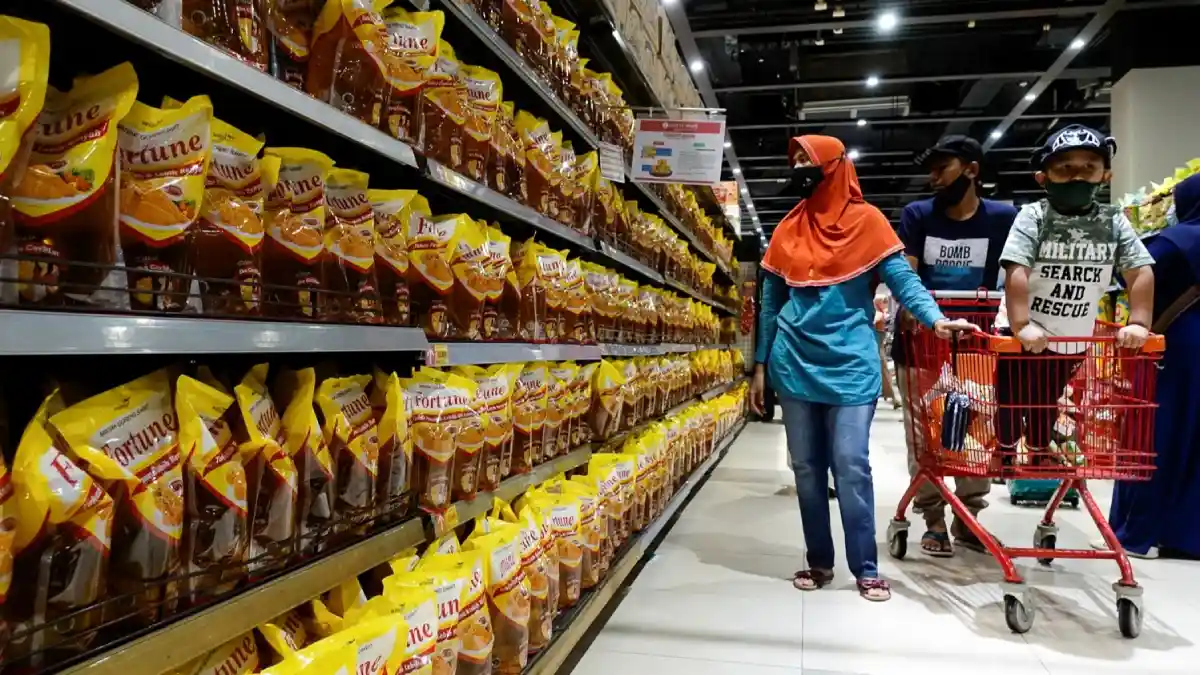Indonesia’s inflation ticked upward in June 2025, driven by rising food prices during Idul Adha celebrations and the start of school holidays, both of which spurred household consumption. According to Statistics Indonesia (BPS), the consumer price index (CPI) increased by 0.19 percent month-to-month, reversing a 0.37 percent deflation in May. This incremental rise, while modest, signals underlying pressures in key sectors, raising questions about the sustainability of economic growth as the government rolls out new stimulus measures.
Food Prices Fuel Inflation Spike
The primary driver of June’s inflation was the food, beverages, and tobacco category, which contributed 0.13 percentage points to the monthly figure. Volatile food prices, a critical concern for millions of Indonesian households, surged by 0.77 percent month-to-month after a sharp 2.48 percent deflation in May. Key staples like rice, bird’s eye chili, shallots, and tomatoes saw significant price hikes, with rice alone adding 0.04 percentage points to the inflation rate. These increases, tied to seasonal demand during religious festivities, highlight the vulnerability of food security in a nation where agriculture remains a cornerstone of the economy.
For many Indonesians, the rising cost of essentials during Idul Adha—a major Islamic holiday marked by communal feasts and family gatherings—adds financial strain. The start of school holidays further compounded demand, as families stocked up on supplies. While these cultural and seasonal factors are cyclical, their impact on inflation underscores the challenge of balancing economic stability with the needs of a diverse population of over 270 million.
Transportation and Administered Costs Add Pressure
Beyond food, transportation costs also nudged inflation higher, contributing 0.01 percentage points to the June figure. A notable 5.81 percent surge in airfares reflected heightened travel demand during the holiday period. However, this was partially offset by discounts on sea and train travel, which saw price drops of 16.96 percent and 4.2 percent, respectively, as part of government-backed initiatives to ease holiday travel expenses.
Administered prices, which include government-regulated goods and services, rose by 0.09 percent month-to-month, reversing a slight decline of 0.02 percent in May. This uptick was driven by increases in household fuel costs, airfares, and machine-rolled clove cigarettes—a popular commodity in Indonesia. Meanwhile, core inflation, which strips out volatile and administered prices to gauge underlying trends, remained nearly steady at 0.07 percent, compared to 0.08 percent in May. This stability suggests that while headline inflation is climbing, broader price pressures are not yet spiraling out of control.
Annual Inflation Within Target Range
On an annual basis, Indonesia’s headline inflation reached 1.87 percent in June, up from 1.6 percent in May but still below the 2.51 percent recorded in June 2024. Notably, the “personal care and other services” category posted the highest yearly increase at 9.3 percent, fueled by soaring gold jewelry prices. This trend, driven by firm domestic demand and global gold price fluctuations since late 2023, reflects both cultural preferences for gold as a status symbol and investment, as well as external economic forces.
Despite these pressures, inflation remains within Bank Indonesia’s target range of 1.5 to 3.5 percent, providing some breathing room for policymakers. A stable rupiah, bolstered by a recent truce between Israel and Iran that eased global market tensions, has also created space for supportive monetary policies. As Hosianna Evalita Situmorang, an economist at Bank Danamon, noted in a statement on July 2, 2025, “The upcoming July stimulus will play a crucial role in sustaining household spending as economic momentum softens in the second half of the year.”
Government Stimulus Aims for Growth
In response to a lackluster first quarter, Coordinating Economic Minister Airlangga Hartarto announced a stimulus package on May 23, 2025, targeting a GDP growth rate of 5 percent for the year. Effective in June and July, the initiative offers discounts on train, airplane, and ferry tickets, as well as toll road reductions for approximately 110 million eligible drivers. These measures aim to bolster consumer spending—a key engine of Indonesia’s economy, which is Southeast Asia’s largest by GDP.
The stimulus reflects a broader strategy to counteract softening economic momentum in the second half of 2025. By subsidizing transportation costs, the government hopes to encourage domestic tourism and mobility, particularly during peak holiday periods. However, with volatile food prices and airfares continuing to exert inflationary pressure, the effectiveness of these discounts in stimulating sustainable growth remains uncertain. Analysts suggest that while short-term relief is likely, structural challenges such as food supply chain inefficiencies and global commodity price swings could undermine long-term gains.
Tourism Boost Offers Economic Bright Spot
Amid inflationary concerns, Indonesia’s tourism sector provided a positive note. According to a separate BPS report released on July 2, 2025, foreign tourist arrivals rose by 14 percent year-on-year in May, reaching 1.31 million visitors. Over the first five months of 2025, a total of 5.63 million tourists entered the country, marking a 7.44 percent increase compared to the same period in 2024. Visitors from Malaysia, Australia, and Singapore accounted for the largest share, underscoring Indonesia’s appeal as a regional travel hub.
This uptick in tourism, particularly in popular destinations like Bali and Jakarta, offers a potential buffer against domestic economic headwinds. Revenue from international visitors supports local businesses, from hospitality to retail, and contributes to foreign exchange reserves. However, the sector’s recovery must be weighed against rising costs for travelers, such as the recent spike in airfares, which could deter future visits if left unchecked.
Balancing Inflation and Growth
Indonesia’s economic outlook for the remainder of 2025 hinges on a delicate balance between managing inflation and fostering growth. While June’s CPI increase is moderate, persistent pressures from food and gold prices, coupled with seasonal demand spikes, signal potential risks ahead. The government’s stimulus package, while timely, addresses only part of the equation—consumer spending—without directly tackling supply-side issues like agricultural productivity or fuel cost volatility.
Bank Indonesia faces its own set of challenges. Maintaining inflation within the 1.5 to 3.5 percent target range requires careful calibration of interest rates and liquidity measures, especially as global uncertainties, such as fluctuating commodity prices, loom large. A stable rupiah provides some relief, but any reversal in geopolitical stability could quickly erode this advantage.
For ordinary Indonesians, the rising cost of living is a more immediate concern. As one butcher at a roadside meat stall in a traditional Jakarta market prepared orders for customers on May 26, 2025, the impact of inflation was palpable. The festive season, while a time of celebration, often stretches household budgets thin, particularly for low- and middle-income families reliant on volatile food staples.
Looking Ahead
As Indonesia navigates the second half of 2025, the interplay between government policy, inflationary trends, and external factors will shape its economic trajectory. The July stimulus may provide a temporary boost to household spending, but its long-term impact on GDP growth remains to be seen. Meanwhile, with food and transportation costs continuing to fluctuate, policymakers must address structural vulnerabilities to ensure that inflation does not outpace the benefits of economic recovery.
For now, the nation stands at a crossroads. Will the stimulus measures ignite sustainable growth, or will persistent price pressures dampen consumer confidence? As reforms and initiatives unfold, their true economic impact remains an open question, one that millions of Indonesians will feel in their daily lives.















